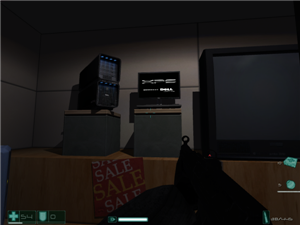Dell XPS 630 Gaming Desktop System
If you've followed the tech sector for any appreciable amount of time, you've no doubt heard the tale of Dell Inc. - one of those stories where a guy with a dream founded a company and eventually built it into a corporate giant. Right from the beginning, Michael Dell believed that the future of PC sales involve building and selling customized IBM PC-compatible computers directly to home users. The first computer of their own design, labeled the "Turbo PC" helped the company gross more than 73 million dollars in its first year alone. And by the turn of the century, Dell would become the largest seller of personal computers, with sales reported to be close to $25 billion dollars.
All good things must come to an end, as they say, and the last decade brought with it a global PC sales slump, as well as increased competition from manufacturers including Apple, Hewlett-Packard, and Gateway. When Dell lost its PC sales lead in 2006 following the union of Compaq with HP, Dell looked for a new avenue to increase their ownership base: gamers. Acquiring Alienware in March of that year, Dell gained some insight into leveraging their own customizable selling base with the hardware specs that more discriminating users craved. To further their efforts, Dell even partnered up with Vivendi Universal with product placement in their expansion pack F.E.A.R. Extraction Point - a move mostly unheard of heretofore.
The past couple of years we have seen Dell's focus on gaming desktops with their XPS series sharpen, and today will see their latest offering, the more affordable XPS 630. Dubbed the "new challenger", the 630 is the beginning of a refresh of the XPS line, with updated specs and component choices. Available in black or red, the Dell XPS 630 is a customizable machine with support for dual graphics cards and the latest processors, and if we may say so, looks that kill.
| |
|
Available in black or red
|
|
|
|
Processors
Operating System
Graphics
Audio
Memory
Hard Drive
Optical Drives
|
Front Panel I/O Ports
Back Panel I/O Ports
Power Supply Unit
Physics Game Accelerator
Bezel Color Options
Light FX 2.0
Dimensions
Weight
Price
|
Our evaluation system came stocked with an NVIDIA GeForce 8800GT and 2GB of Samung DDR2-667 memory. Although the base unit ships with an Intel Core 2 Duo E8200 processor, we opted to test the XPS 630 with a Core 2 Quad Q6600 running at 2.4GHz. For added benefit, we also took Dell up on an offer to test not only some faster RAM in the form of Hynix DDR2-800 sticks, but also doubling up the number of GPUs by throwing in an extra 8800GT in SLI. The keyboard, mouse, and mousepad look capable enough for most users, although the mouse is a simple two-button scrollwheel variety. As with everything else, these two component can be exchanged for higher-end peripherals such as Razer's Tarantula Gaming Keyboard or a Microsoft Sidewinder USB Laser Mouse, for an additional cost. The choice is yours.










